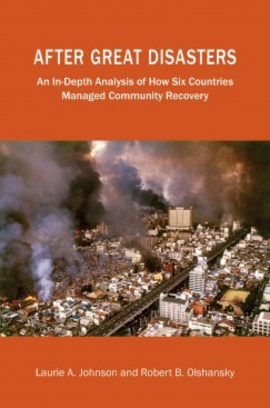The 2017 Governor’s Hometown Award Governor’s Cup Award goes to Macon County, for the WSOY Community Food Drive, a one-day food drive that not only supplies the community’s food banks for an entire year, but serves as the benchmark and example of best practices for communities around the nation. In 2016, the SWOY Community Food Drive raised 1.4 million pounds of food in 12 hours.
|
|
In 2016, a group of parents, educators, and archaeologists, including representatives from the Society for American Archaeology’s Committee on Native American Relations, Public Archaeology Interest Group, and Public Education Committee, compiled resources to teach about Thanksgiving with a Native American perspective. It's for educators and parents who want to expand what their kids are learning about Thanksgiving. The website includes teacher resources, books for students, preschool and elementary resources, activities for Grades 6-12, and videos. |
|
 | | | |
There is an urgency in rebuilding following a large-scale natural disaster. People need housing, roads and bridges must be repaired, and businesses need to reopen. Residents are eager to have their community return to normal quickly. But there is also an opportunity to make improvements in the design of a community and its infrastructure and land use, and planning for such changes takes time. “The basic tension in this is between speed and thinking about doing (reconstruction) better,” said Robert Olshansky, the head of the University of Illinois department of urban and regional planning and an expert in post-disaster recovery. Olshansky has studied disaster recovery all over the world and played an advisory role in recovery efforts. His new book, “After Great Disasters: How Six Countries Managed Community Recovery,” co-written with Laurie Johnson, an internationally recognized urban planner specializing in disaster recovery and catastrophe risk management, details the lessons from these disasters that can guide governments in better responding to a large disaster. |
|
The US will export more than $2.3 trillion in goods and services this year, representing about 12% of total gross domestic product. As the US is renegotiating or leaving trade deals with other countries, local economies that rely heavily on exports could be significantly affected. Although counties with big cities such as Los Angeles, New York and Houston generate the highest dollar volumes of exports, the most export-dependent places tend to be rural or suburban counties whose economies are based on a single industry, company, or plant. Of the 154 counties whose exports account for more than a quarter of GDP, 11 have populations above 100,000 and half had fewer than 25,000 residents (Pew Research Center; Brookings Institution “Export Monitor 2017” report). |
|
|
